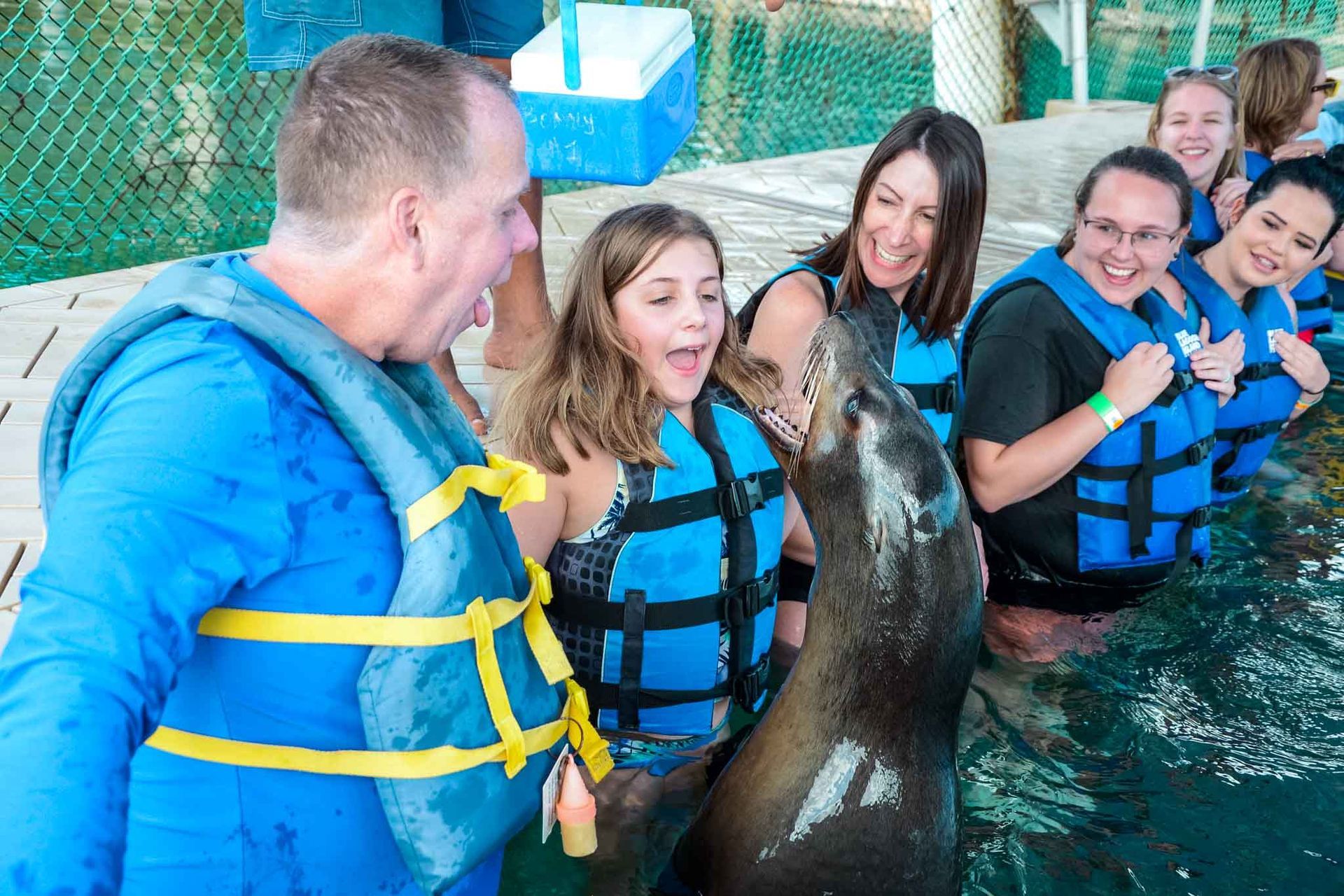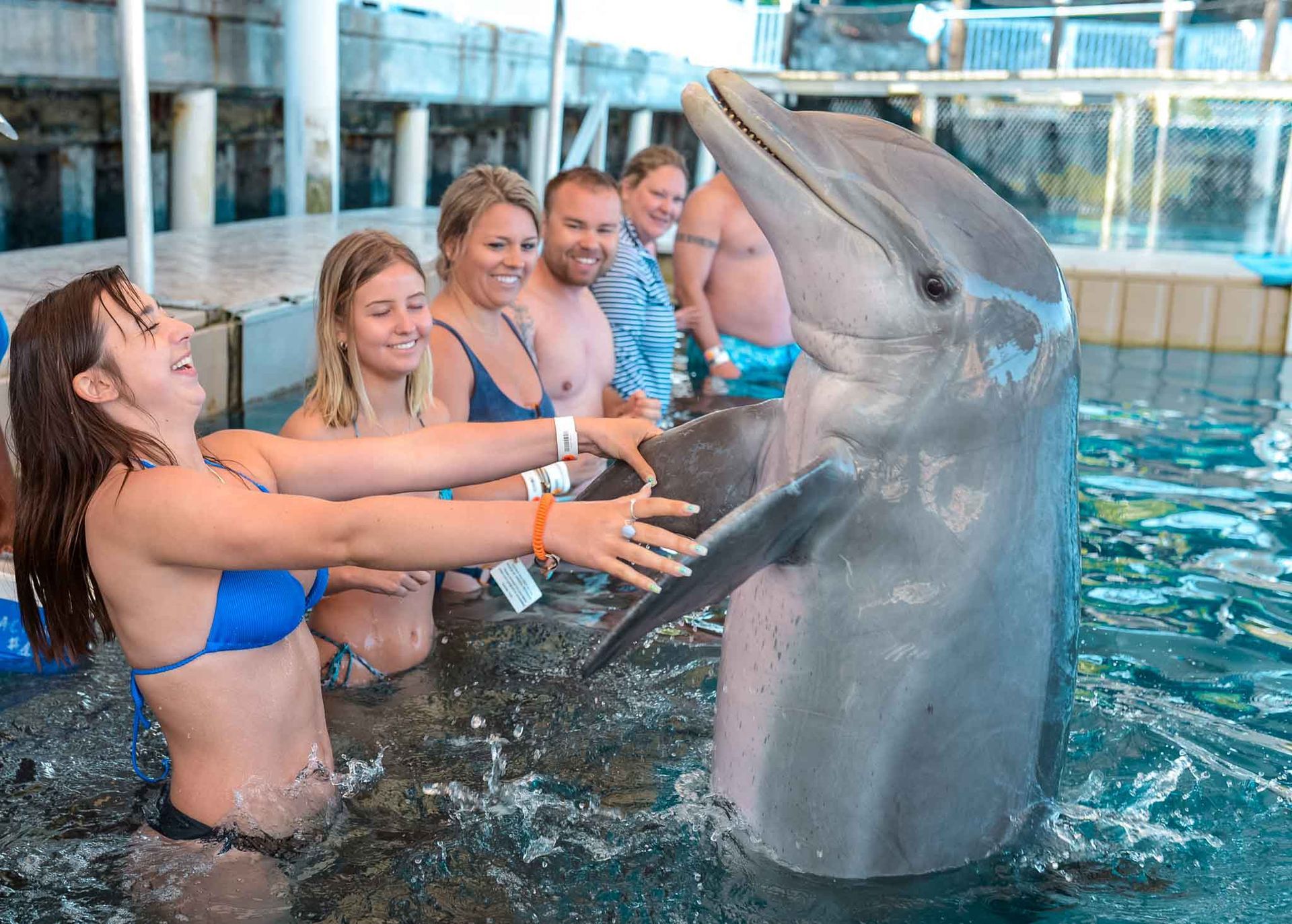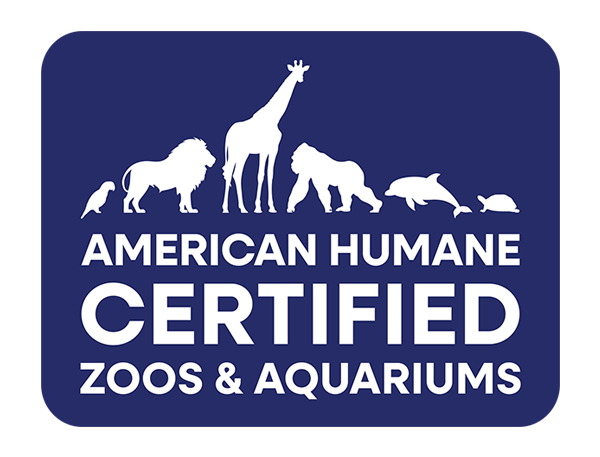
Sea lion Dictionary – Vocabulary
List of Services
-
By-catchItem Link List Item 1
When an animal is caught up accidentally and not as the intended catch, then discarded by being thrown back into the sea whether dead or injured by fisherman. The animals have no economic or food purpose thus they are released.
-
Delayed ImplantationItem Link List Item 2
This is an ability within sealions for a fertilized egg to stop growing and float around freely for a period. For about three months a hollow ball of fertilized egg will float around in the uterus without immediate implantation. Depending on key environmental factors either the egg will begin to develop into a fetus or be expelled.
-
Ear FlapsItem Link List Item 3
These are external ears on a sealion and they are called pinnae. They can hear sound waves travelling in the air similar to our hearing. It is believed that the shape of the earflap may assist with efficiency in directing sounds to the ear canal of a sealion.
-
EntanglementItem Link List Item 4
This occurs when any part of an animal becomes wrapped up with difficult removal. Most commonly for sea creatures fishing line in the entanglement culprit.
-
FlippersItem Link
These broad flattened limbs specially designed for movement in water. Within the family of whales and pinnipeds like sealions, the flippers have bones in them just like our hands. In pinnipeds these are hairless.
List of Services
-
Fore FlippersItem Link List Item 1
When it comes to whales, flippers refer to the forelimbs. However, in sealions and sea turtles there are four individual limbs called fore- flippers and hind-flippers. They are used by sealions in a flapping fashion to increase speed.
-
FusiformItem Link List Item 2
Simply means spindle shaped or wider in the middle and narrower at the ends. This an impeccable design to streamline the body and improve swim speeds a best practice to conserve energy.
-
Hind FlippersItem Link List Item 3
The flippers found at the rear of sealion and providing the proficiency of steering. Sealion also have five toenails found on each of the two hind-flippers useful for scratching and grooming.
-
MammalItem Link List Item 4
Vertebrate animal of a class called Mammalia, which is distinguished by specific traits. Born alive, nurse young, warm-blooded, breathe air and have hair.
-
Marine DebrisItem Link
Any trash that has found its way into the ocean. Marine debris may be large stretching for miles or be as small as a microbead. Trash in the ocean affect all animals from zooplankton to marine mammals and fish.
-
Marine Mammal Protection ActItem Link
This is a lawful regulation that has been enacted in 1972, by way of congress. It was a response to concerns for mammal safety in relation human contact. By regulating human behavior and taking the ecosystem approach the national policy works to diminish significant loss to marine mammal populations through health and understanding the broader community that supports marine mammal species.

List of Services
-
Sagittal CrestItem Link List Item 4
This is the body feature found on the head of a male sealion. It is a prominent boney forehead and tells us that the male sealion is an adult from sight.
-
Sexual DimorphismItem Link
Physical differences that indicate the gender of a species many times it is size, but it may also show up in other ways such as coloration. In sealions males will grow to be significantly larger than females about 2-4 times their weight. In sealions, there is also a difference in lifespan between males and females.
-
StrandingItem Link
In the family of pinnipeds stranding is the term used for needing medical attention or found dead on land or in water. Stranding may occur for a number of reasons.
-
VibrissaeItem Link
The stiff whiskers found in sealions. Made of keratin the same substance that makes up our fingernails. There are 40-60 whiskers found on a sea lion’s muzzle.
In case you didn’t know… Sealion Facts
Dive into the amazing world of sea lions! From their playful personalities and unique adaptations to the challenges they face in the wild, these fascinating facts reveal how sea lions live, communicate, and thrive. Understanding these intelligent marine mammals helps us appreciate why they deserve our care and protection.
What types of habitats do California Sealions like?
Various land areas like sandy beaches or man-made structures with great sea access like jetties buoys and even piers. They like tropical and temperate climates and can be found there. Their range is from the East Coast of Anchorage Alaska to Southern Mexico.
How can you tell the difference between male and female sea lions?
Female sealions will not have a sagittal crest like male sealions do, which develop by 10 years of age. Females are a smaller and sleeker in build than the bustling girth of a male sealion. When young, sealions pretty much look the same, As an adult a male may weigh in at 660-770lbs and at maximum weight may be nearly 4 times the size of a female.
Where do sea lions live most of the time?
They spend most of their time in the water but come ashore to sleep, rest, breed and in some cases, molt. On longer foraging trips, they actually sleep floating upright at the surface with the nose held above the surface of the water.
How do sealions use their whiskers?
They are used for exploration and finding out what is in the aquatic and terrestrial environment. Sea lions lose their eyesight quickly or may be valuable while swimming in a lowlight environment. Imagine you were blindfolded and could not see an object just as you would use your hands to tell you what it is, sealions use their whiskers.
Why are sealions’ teeth black?
Sea lions’ teeth are black or dark brown. Sea lions do not have enamel on their teeth like us. Instead, they have a natural bacterium that builds up when they are young and helps protect the teeth.
What humans and sealions have in common?
Sealions and humans share the 5 commonly known traits of all mammals; born alive, breathing air, nursing young, being warm blooded and having hair. Their ability to learn and be trained and also teach culture are also similar traits.
Do sealions have toenails?
Yes,technically they have 5, however 3 are prominent while the other two are barely noticeable. These nails are found on their hind flipper. To itch its whiskers, a sea lion will often rub its hind flippers on its face. Sea lions do not need pedicures though as the nails wear down on their own!
What is the lifespan of a sealion?
The normal lifespan for a sealion in the wild, differs between males and females. Males live about 8 years and for a females 12 years. Living in facilities, having access to human intervention and preventative care significantly increases their life span 2- 3 times over that of their wild counterparts. Sealions born at a facility may live up to 24 years.
Who is a predator of sealions?
Orcas and Sharks. These ambush predators predate upon sealions commonly. Larger sharks such as great white sharks will not expend all of their energy on a meal. They use the unexpected and unknown to their advantage. Stealth and ambush make for an easier meal. Orcas use a number of strategies to catch sealions. Tipping glaciers, sliding in and out of the shallows or fluke slaps to stun a sealion are just a few ways for them to have a sealion as a meal. Sealions do eat smaller or juvenile sharks as a part of their varied diet of marine animals.
What are common threats to sealions in the wild?
In the wild, sea lions face a variety of natural threats and man-made challenges. Malnutrition causes the highest percentage of strandings, linked mostly to parasites and climate change due to El Niño events. The disease leptospirosis is the second most common cause of the strandings. The third most common cause is trauma, mostly caused by humans shooting the animals. Entanglement in marine debris, shark bites and propeller wounds are also factors.
How can I help sealions?
Being respectful of sea lions is the best way to help them. Keeping the Ocean clean of marine debris – trash that has made its ways to the sea — and pollutants by REDUCING your trash, REUSING items and RECYCLING makes the sea a safer place for all marine life. Learn more about protecting marine mammals in the wild at the Watchable Wildlife Guidelines!
Got more questions? Let us know at…
Educational Contact Email:
More to Discover



Dolphin Facts
Fun and fascinating facts about dolphins—their intelligence, communication, and ocean adventures!







